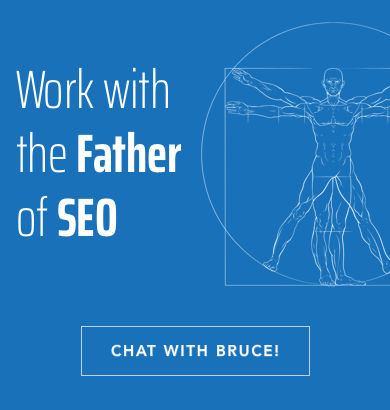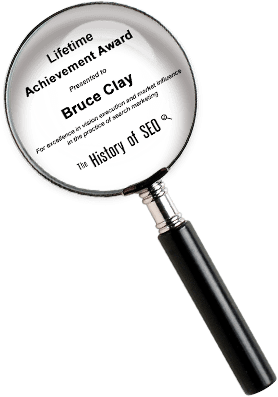How SEO Helps Mortgage Brokers Generate High-Intent Borrower Leads

SEO for mortgage brokers changes that. It puts your name in front of the right people before they’ve even picked up the phone. It’s not just about keywords — it’s making sure your site feels trustworthy, your local listings are accurate, and your content actually answers what buyers are asking.
The nice thing about SEO is it doesn’t vanish the second you stop paying for it, like ads do. Once you’ve put in the work, it keeps pulling in visitors day after day. Add helpful touches — maybe a simple mortgage calculator, a quick rate chart, or a short guide that answers common questions — and people have a reason to come back. That’s how you start building steady interest and trust over time.
Why This Matters
People looking for a mortgage almost always start with a search. They’ll type questions into Google like, “What’s the best mortgage rate right now?” or “Can I get approved for a VA loan?” If your site isn’t showing up with answers, your competitors’ are.
Yes, the space is crowded — but that also means plenty of people are actively searching. Good SEO gets you in front of them at the exact moment they’re deciding who to work with. Whether you’re a solo broker or part of a larger firm, showing up in those searches builds trust and helps you avoid paying middlemen for leads. In today’s market, being easy to find online isn’t just nice to have — it’s expected.
What I Think
SEO is the single most effective inbound marketing channel for mortgage brokers. I’ve seen brokers outrank national lenders just by publishing consistent local content and optimizing their service pages. In my opinion, every broker should own their region online—meaning they rank for “[type of loan] in [City]” and dominate map listings.
Borrowers want clarity, not complexity. If they’re searching and your site gives it to them, you’ve already won half the battle. SEO isn’t about gaming the system — it’s about showing up when it counts. Keep it helpful, keep it real, and you’ll have leads finding you even while you’re sleeping.
Primary SEO Tasks
Borrowers aren’t out there flipping through phone books anymore—they’re on Google, searching for answers. They want to know who can get them pre-approved, what their payments might look like, and which lenders they can trust.
Primary SEO work is where you cover the basics that get you in front of those people—making sure your site loads fast, your pages say exactly what you offer, and your name shows up when it matters.
Keyword Targeting
Most borrowers start their mortgage hunt with a search—and the exact words they type can make or break whether they find you. It might be “best mortgage broker in [City],” “FHA loan pre-approval [City], or even “low down payment home loans near me.” Someone thinking about refinancing could be searching for “refi calculator” or “lower mortgage rate [area].”
The smart play is to group your keywords by loan type—FHA, VA, Jumbo, USDA—along with who you’re trying to reach, like first-time buyers or investors, and where they are in the decision process. And don’t skimp on the local variations; they’re often the thing that gets you in front of ready-to-act borrowers instead of buried under national competitors.
On-Page SEO
Every page on your site should pull its weight. With mortgage broker SEO, that means your titles, headers, and URLs speak the same language your local borrowers do—clear, specific, and easy to understand.
Break out a page for each loan type you handle, and spell out who it’s for, why it’s a good fit, and how to start the process. Show you’re legit with your license number, lender partner logos, and a few words from past clients.
And when you tackle the more technical things—like amortization or LTV ratios—keep it simple. Short, scannable sections work better than long, dense paragraphs. Most importantly, always end pages with clear next steps—apply, schedule a consult, or call now.
Local SEO
Your Google Business Profile should include high-quality photos, updated hours, service areas, and keyword-rich descriptions.
Below are more tips that affect local SEO:
- Collect reviews from satisfied borrowers that highlight trustworthiness, communication, and results.
- Create location pages for each city or county served.
- Consistent NAP (Name, Address, Phone) citations across business directories build authority.
- Local pack visibility for terms like “mortgage broker near me” is crucial.
Content Strategy
Not every piece of content has to be fancy—but it does need to be useful. Think quick posts answering the exact things borrowers Google at midnight, like “What’s the VA loan limit this year?” or “Fixed or adjustable—what’s smarter right now?”
Mix in a mortgage calculator, a short video, and maybe even a chart that explains things faster than you can say “LTV.” Keep your tone plain and real. Cut the filler. The more you help, the more people stick around—and when they’re ready, they’ll remember who made things simple for them.
Technical SEO
Make sure your site loads quickly, works well on mobile, and uses HTTPS so visitors know it’s secure. Google notices that, and so do borrowers. If you’ve got broken links, weird redirect loops, or pages that aren’t showing up in search, fix them.
You can also add structured data for your services and FAQs—this helps your results pop with extra details that grab attention.
Internal Linking
Linking your pages the right way can boost rankings and keep readers hooked—here’s what to do:
- Link blog posts to loan service pages.
- Embed glossary terms within educational content.
- Guide users to apply or call.
- Create silo structures by product type—conventional loans, FHA, VA, refinance.
The better your internal linking, the easier it is for users and search engines to understand your value and expertise.
Secondary SEO Actions
Once the main SEO pieces are in place, the rest is about upkeep. It’s checking in, fixing little things, adding what’s missing, and keeping your site fresh so it stays useful. These smaller moves might not feel urgent, but they add up—and they help you keep showing up when people search.
Schema for Mortgage Services
Schema helps boost visibility and click-through rates. Use FinancialProduct, Organization, and FAQ schema to enhance how your listings appear in search. Add attributes for interest rates, down payment options, credit score minimums, and product types. Implement Review schema to pull in star ratings where applicable.
Review Management
Encourage reviews immediately after closing or pre-approval. Make it easy for clients to leave reviews on Google, Yelp, and Zillow. Use keyword-relevant phrases in review requests to naturally reinforce SEO. Respond promptly to all reviews to build trust and activity signals. More reviews = higher local rankings and more confidence from prospects.
Rate Comparison Tools
Integrate calculators and comparison charts to help users evaluate their options. Tools like “rent vs. buy,” “refinance savings,” or “loan affordability” bring in backlinks and increase session duration. Use these tools to support content and capture emails through gated features.
Common Topics for Mortgage Brokers
Most people don’t kick off their mortgage search by looking up a broker’s name. They start with questions: Can I get approved? How much will it cost me each month? Is refinancing worth it right now? If your site gives clear, useful answers, you’re on their radar before they’ve even chosen who to call.
In the next section, we’ll walk through how SEO can put you in front of the right borrowers—and keep you there.
Reach First-Time Buyers
SEO connects you with new borrowers searching for basic help. Ranking for “how to get a mortgage in [City]” builds trust instantly.
Attract Refinance Leads
Optimizing for “refinance my home [City]” or “lower mortgage rate [zip]” positions you for repeat business from current homeowners.
Increase VA & FHA Loan Visibility
SEO lets you compete with national lenders by creating local pages that answer common questions and show expertise in government-backed loans.
Support Purchase Transactions from Realtors
Realtors love referring to brokers who are visible and informative. SEO gives you a marketing presence they can trust and share.
Build Trust with Borrowers
Showing up organically with helpful content builds borrower confidence in your transparency and knowledge.
Generate Investor Traffic
Investors often search “DSCR loans in [State]” or “non-owner-occupied mortgage [City].” Be there when they do.
Rank in Maps for Local Searches
Google Business Profile optimization paired with good reviews helps you show up in map results—where borrowers click first.
Convert Long-Tail Queries
Searches like “can I buy a house with student loans in [State]” have high intent. SEO lets you rank for these valuable, niche phrases.
Save on Paid Lead Costs
Organic leads cost less over time. SEO reduces reliance on Zillow, LendingTree, or PPC budgets and gives you more control over your pipeline.
Conclusion
Mortgage brokers who rank locally and educate consistently are the ones who win the long game. SEO builds a trustworthy digital presence that converts confused shoppers into confident applicants. If you want a pipeline of high-intent borrowers without paying referral fees or chasing cold leads, SEO is your answer. Ready to grow your mortgage business through search? Contact us today to start building your authority and visibility.
FAQ: How can mortgage brokers effectively utilize SEO to generate high-intent borrower leads?
For mortgage brokers, SEO is one of those tools that works quietly. It puts you in front of people who are already online looking for the kind of loan you can offer. The trick isn’t stuffing keywords everywhere—it’s making your site feel like the obvious choice. Keep the content clear, answer real questions, and use a few smart moves to make sure you’re the one they find first.
Understanding search engines’ functionality is critical, and understanding what borrowers search for is even more essential to establishing trust and authority in an increasingly competitive field.
Once you know which keywords potential borrowers are searching for, determine the content, blogs, and landing pages your potential borrowers use as resources for understanding more about your loan offerings and mortgage rates. Use those to create high-quality articles answering common queries while keeping people engaged. Don’t forget local SEO tricks either—this way, your potential borrowers can find you!
Consider technical SEO when developing content and expanding reach. Make sure your website loads quickly, works well on mobile devices, and is secure. It creates a better experience for visitors—and search engines tend to reward that.
Partnering or guest posting to build backlink profiles that establish credibility can result in even more qualified leads.
Building relationships with prospective borrowers also matters. Social media is a simple way to stay in front of potential borrowers. You’re not just promoting—you’re giving people a reason to remember your name. A few helpful posts here and there can go further than you’d expect.
Should your website’s conversion rate leave something to be desired, don’t just sit there; do something! Take that deep dive into your web performance analytics—Google Analytics, SEMrush, or some similar tool—to understand why.
SEO for mortgage brokers isn’t about keeping up with the competition—it’s about staying ahead in a field that is arguably as competitive as the mortgage brokerage industry itself. This means using tools that are data-driven to steer your work in the direction of the trends that are not just safe but also smart.
Step-by-Step Guide to Utilizing SEO for Mortgage Brokers:
1) Conduct thorough keyword research in order to discover high-intent mortgage-related keywords.
2) Use the kinds of words people would actually search for, and work those into your blog posts, FAQs, and maybe even your homepage if it makes sense.
3) Look at your site’s titles and headers. Are they clear? Do they say what the page is about? If not, tweak them so both people and search engines can scan them easily.
4) If your website’s hard to use or loads slowly, people won’t stick around. Make sure it’s easy to navigate and works well on phones too.
5) Utilize technical SEO best practices, such as HTTPS security and structured data storage.
6) Get links from other sites when you can. That might mean writing a guest article or working with someone else in your space.
7) If you work with local clients, double-check your Google Business Profile. Add local info to your site where it feels natural.
8) Share helpful tidbits online and interact with customers to build trust.
9) Look at your site data now and then to get a general sense of which pages people visit most and where they fall off.
10) Check your SEO regularly. Things break, tools change, and search engines shift. A quick review now and then helps you stay ahead.
11) SEO isn’t static. You don’t need to chase every trend, but stay aware and adapt when it makes sense.
12) Shoot a quick video or run a low-key webinar—don’t overproduce it.
13) If they visit and vanish, follow them around with ads until they click again.
14) Partner with bloggers or finance pros your audience already listens to.
15) Change one thing on your landing page, then watch the numbers—small tweaks win big sometimes.
16) Keep all leads in a CRM so you’re not digging through old emails.
17) Drop in calculators so people can run their own numbers before they call.
18) Hang out in online forums. Be helpful. People remember who helped.
19) Stay inside the rules and keep everything plain-spoken.
20) Consider making an app to keep your info one tap away.
21) Go live once in a while. Let people ask you questions right there on the spot.
22) Keep an eye on the data and scrap the dead weight.
For mortgage brokers, SEO done right isn’t some abstract marketing trick—it’s just showing up where the right people are already looking (e.g., a first-time buyer googling late at night or a homeowner wondering if a refinance makes sense).
If your name pops up then, you’ve got a head start before they’ve even spoken to anyone. Over time, it’s less about chasing every lead and more about keeping a steady flow of the kind of clients you actually want knocking on your door.









